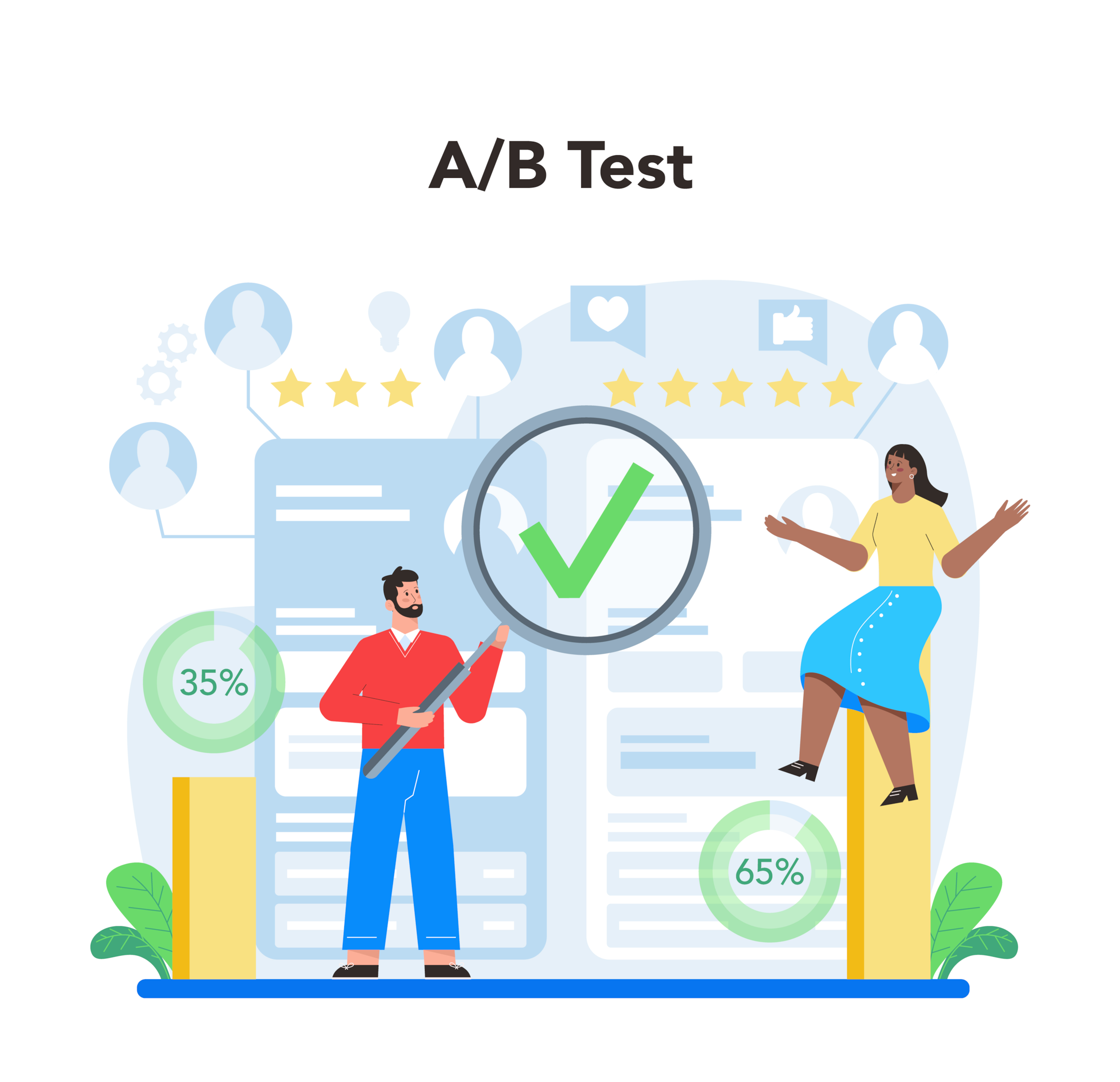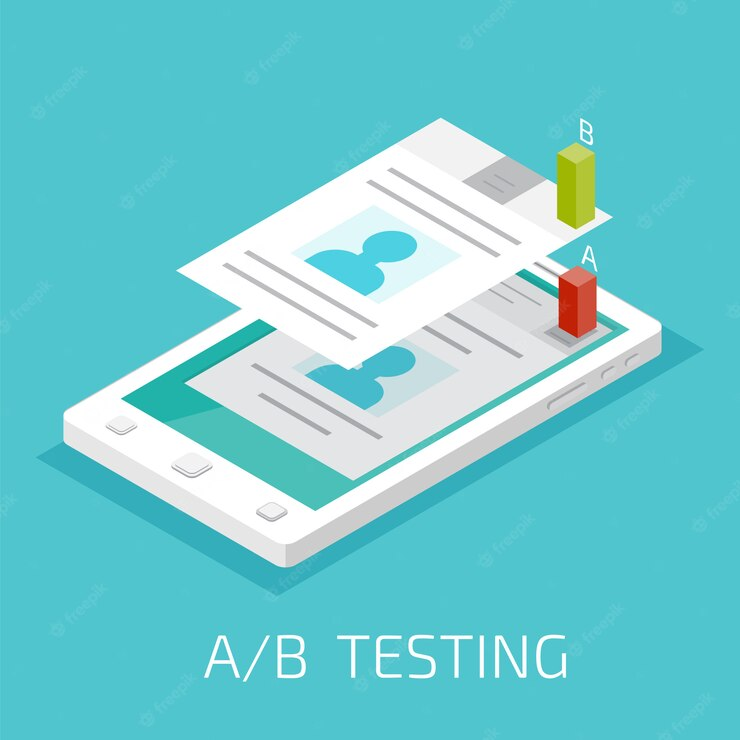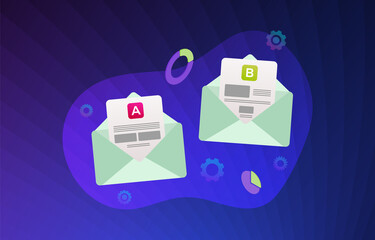We’ll increase conversions by
20-100+%
on your website.
Get a FREE Audit today
See how we can help your business increase conversion rates
How To Analyze And Interpret AB Test Result For Optimal Performance

Introduction
In today’s fast-paced digital landscape, making data-driven decisions is crucial for success. One powerful tool at your disposal is A/B testing, which involves comparing two versions of a web page or product to determine which performs better with users.
But how can you make sense of the results and apply them for optimal performance? In this blog post, we’ll walk you through the steps for conducting an A/B test and provide guidance on analyzing and interpreting the results to drive growth in your business.
Key Takeaways
-
Conducting an A/B test involves defining the variable to test, developing a hypothesis, determining sample size, and splitting test groups before implementing the test.
-
Analyzing A/B test results requires gathering and calculating essential metrics such as conversion rates and click-through rates to determine statistical significance using online calculators or built-in analysis tools.
-
Interpreting and applying A/B test results correctly involve measuring the significance of the results, understanding their implications, identifying opportunities for improvement based on those findings, making necessary adjustments, monitoring changes made, and incorporating results into a growth strategy.
-
By following these steps carefully when conducting an A/B test and analyzing its result accurately with essential tools available businesses can gain valuable insights into user behavior. These insights will help in optimizing website or product performance which increases conversions ultimately leading to increased revenue.
Steps For Conducting A/B Testing

To conduct an effective A/B test, first define the variable to test and develop a hypothesis, then determine the sample size and split test groups before implementing the test.
Define The Variable To Test
Defining the variable to test is a critical first step in executing an effective A/B testing strategy. This involves selecting an element or feature on your webpage or app that you believe has a significant impact on user behavior and conversion rates.
For instance, if you aim to improve the click-through rate of a call-to-action button, potential variables could include button color, text size, or phrasing.
Develop A Hypothesis
Developing a well-crafted hypothesis is a critical step in the A/B testing process, as it sets the foundation for your experiment and guides decision-making. A good hypothesis should be clear, actionable, and testable – highlighting what changes you expect to make on your web page or app and predicting their impact on user behavior or conversions.
To create an effective hypothesis, start by identifying potential areas of improvement on your website based on analytics data or feedback from users. Next, research industry best practices and analyze competitor sites to gather insights into possible solutions.
Finally, use this information to craft a precise statement outlining the proposed change(s), predicted outcome(s), and key performance indicators (KPIs) that will help measure success.
Define The Sample Size
Defining the appropriate sample size is a crucial step in conducting a successful A/B test, as it directly impacts the reliability and validity of your test results.
To determine the optimal sample size for your A/B test, consider using online tools like sample size calculators or consulting with experts who can help guide you through this process.
For instance, if you expect a small improvement in conversion rates from 2% to 3%, you will need a larger sample compared to expecting an increase from 10% to 15%. It’s essential to use reliable data when defining your sample size because selecting too few participants can result in false positives or underpowered tests that fail to uncover statistically significant results.
Split Test Groups
Split test groups are a crucial component of A/B testing. This involves dividing your website traffic or email list randomly into two groups, with one group serving as the control and the other receiving a variation.
For example, if you are testing a call-to-action button’s color, half of your visitors will see the original button while the other half will see a different colored version.
It is essential to ensure that both groups represent an equal portion of your target audience and receive identical experiences apart from the element being tested. By creating these split test groups, you can compare how each group responds to varying web pages or marketing campaigns accurately.
Implement The Test
After splitting the test groups, it’s time to implement the A/B test. This means actually running both versions of your web page or marketing campaign simultaneously and collecting data on just how much traffic and visitors interact with each version.
During implementation, it is important to ensure that everything is consistent except for the one variable being tested. For example, if you are testing different website headlines as your variable, make sure all other elements on each version of the landing page remain identical- including images and button placements- so you can accurately compare visitor behavior.
How To Analyze A/B Test Results

After gathering the necessary metrics, such as conversion rates and click-through rates, it is important to determine statistical significance using tools like online calculators or A/B testing platforms with built-in analysis tools.
Gathering And Calculating Necessary Metrics
When analyzing A/B test results, it is important to gather and calculate necessary metrics to determine the effectiveness of the variations being tested. Here are some essential metrics to consider:
1. Conversion rate: This is the primary metric used to measure the success of an A/B test. It shows the percentage of visitors who completed the desired action on a webpage.
2. Click-through rate (CTR): This measures how many people clicked on a specific element or link on a webpage.
3. Bounce rate: This metric shows how quickly visitors leave the webpage without further engagement.
4. Engagement metrics: These include time spent on page, scroll depth, and engagement with different elements on the same page.
5. Revenue per visitor (RPV): This metric helps determine which variation same web page generates more revenue per visitor.
6. Return on investment (ROI): This metric compares the cost of running an A/B test with its benefits in terms of increased conversions or revenue.
7. Statistical significance (p-value): This metric indicates whether there is a significant difference between variations in performance that is not due to random chance.
By gathering and calculating these metrics, you can have a better understanding of how each variation performs and make data-driven decisions regarding which one should be implemented for optimal performance.
Determining Statistical Significance
Determining statistical significance is a crucial step in analyzing A/B test results. It helps to understand how confident we can be about the effectiveness of our variation compared to the original.
To determine statistical significance, we use a p-value which represents the probability that an observed difference between variations occurred by chance.
For example, if we run an A/B test on two versions of an email campaign with 1000 emails each and find that Variation B has a conversion rate of 12%, while Variation A has a conversion rate of only 10%, then we would need to calculate the p-value using statistical analysis tools such as Google Analytics or online calculators for statistical significance.
Analyzing Results By Segment And Device
Analyzing A/B test results by segment and device is essential to gain a deeper understanding of user behavior. By segmenting data based on demographics, location, or other factors, you can see which variation performs better for specific groups of users.
For example, if you’re testing changes to a mobile app’s interface, you may choose to segment the data between iOS and Android users.
It’s also important to analyze results by device type. With more people accessing websites and apps on their mobile devices than ever before, it’s crucial to ensure that variations perform well across all devices.
For instance, if you discover that your call-to-action button performs significantly better on desktops than on mobile devices, it may indicate an issue with the layout or design of your your mobile versus desktop site.
Identifying Patterns And Trends
Analyzing A/B test results is not just about looking at the raw data; it is also about identifying patterns and trends. One way to identify these patterns and trends is by segmenting your data.
For example, let’s say you run an e-commerce store that sells clothing. You decide to run an A/B test on the color scheme of your checkout page. After running the test for a week, you find that the variation with a green checkout button performed better than the original blue one.
However, when you break down the results by demographic segment, you notice that this was mainly true for women buyers while male buyers favored another variation.
Furthermore, tracking changes in patterns over time can provide insights into long-term performance and issues such as seasonality or external factors that influence user behavior beyond what would typically occur due to changes made during testing periods alone.
Interpreting And Applying A/B Test Results For Optimal Performance

To make the most of your A/B test results, it’s essential to interpret and apply them correctly.
Measuring The Significance Of The Results
To truly understand whether the results of such an experiment or A/B test are significant, you must calculate statistical significance. This involves gathering and calculating necessary metrics such as conversion rates, click-throughs or engagement levels for each variation tested.
Once this data has been gathered, determine if the test results are statistically significant using a significance level that makes sense for your sample size and business goals.
For example, suppose you’re testing two different headlines on a landing page: “Get 50% off today!” versus “Limited time offer.” After running the test with enough traffic to reach statistical significance (say, 5000 visitors per headline), you discover that version A had a significantly higher conversion rate (5%) compared to version B (3%).
Understanding The Implications Of The Results
Once the A/B testing results are in, it’s important to understand what they mean for your website or marketing campaign. Identify which variation performed better and why.
Look at metrics such as conversion rates, click-through rates, and bounce rates to see how users are interacting with each version of the page.
For example, if Version B had a higher conversion rate than Version A because it had a more prominent call-to-action button, consider incorporating this design element into other areas of your website.
Identifying Opportunities For Improvement
To get the most out of A/B testing, it’s vital to identify opportunities for improvement based on test results. This involves taking a closer at ab test result to look at which variation performed better and why.
For instance, if one variation resulted in higher conversion rates, the focus should be on identifying what specific factors contributed to this desired outcome such as more engaging content or a stronger call-to-action.
Implementing Changes
Once the A/B test results have been analyzed and interpreted, it’s time to make changes based on those findings. Here are some steps to follow when implementing changes:
1. Identify the opportunities for improvement: Review the results of the A/B test to determine which variation performed better and why. Look for patterns and trends in user behavior that provide insight into what changes need to be made.
2. Make necessary adjustments: Based on the findings from the A/B test, make any necessary changes to improve website performance or achieve other desired outcomes. This could include adjusting headlines, changing call-to-action buttons, or modifying page layout.
3. Monitor and adjust: Once changes have been made, monitor their impact on website performance and adjust as needed. Continuously track key performance indicators (KPIs) such as conversion rate, bounce rate, and click-through rate to ensure that improvements are being realized.
4. Incorporate results split testing into growth strategy: Use insights gained from A/B testing to inform future tests and incorporate results into overall growth strategy. This helps ensure that ongoing improvements are made over time for optimal performance.
By following these steps, businesses can use A/B testing as a powerful tool for improving website performance and achieving business goals.
Monitoring And Adjusting
Once you have analyzed your A/B test results and made changes to optimize performance, it’s essential to continue monitoring and adjusting your strategy. This involves regularly reviewing your metrics and making any necessary updates based on user behavior trends or changes in the market.
For example, if you notice that certain segments of users are not responding well to a particular variation, you may need to adjust your messaging or design elements for that specific audience.
By continuously monitoring and adjusting your A/B testing strategies, you can gain valuable insights into what works best for engaging with different audiences and achieving optimal conversion rates.
Incorporating Results Into Strategy For Growth
After analyzing and interpreting A/B test results, it’s crucial to incorporate the findings into your strategy for growth. Firstly, measure the significance of the results to confirm that they are reliable data points.
Then, identify opportunities for improvement by understanding what worked and didn’t work in each variation.
It’s important to monitor and adjust your approach continuously, especially when running future tests. Consider external and internal factors that might influence visitor behavior, such as seasonality or market trends.
Incorporate key takeaways from previous A/B tests into future campaigns to increase conversions continually.
Common Pitfalls In Analyzing A/B Test Results

Common pitfalls in analyzing A/B test results include misinterpreting statistical significance, failing to consider external factors, overlooking the importance of sample size, neglecting to analyze results from multiple metrics and by segment, and choosing a winner too soon.
Misinterpreting Statistical Significance
One of the most common pitfalls in analyzing A/B test results is misinterpreting statistical significance. Statistical significance refers to the probability that an observed difference between two groups occurred by chance or due to some factor outside of your control.
However, it’s easy to get caught up in chasing statistical significance without considering other factors like practical importance and external variables. For example, if you run an A/B test on two landing pages with different call-to-action buttons and see a statistically significant increase in conversions for one page over another, but there are only marginal differences in conversion rates (e.g., 5% vs.
6%), then it may not be worth implementing changes based solely on those results.
Failing To Consider External Factors
Ignoring external factors can be a common pitfall when analyzing A/B test results. It’s important to have multiple variables and keep in mind that changes in user behavior, seasonality, and external events can all have an impact on the performance of a website or marketing campaign.
For example, if you’re testing two different versions of your website during the holiday season, you may see different conversion rates than you would during other times of the year.
Failing to account for these external factors when interpreting your A/B test results could lead to misguided decision-making and ineffective optimization strategies. It’s crucial to gather data consistently over time and conduct multiple test iterations to get reliable insights into user behavior and optimize for success.
Overlooking The Importance Of Sample Size
One common mistake in A/B testing is overlooking the importance of sample size. It’s important to test hypotheses have enough data per variation to achieve statistically significant results.
If the sample size is too small, it can lead to false positives or false negatives, which means that the winner declared may not actually be the best performing variation.
For example, if a company only tests two versions of a web page with 20 visitors each and declares a winner based on those results, it may not be representative of the larger audience and could lead to incorrect conclusions.
Neglecting To Analyze Results By Segment
Neglecting to analyze A/B test results by segment is a common mistake that marketers make. It happens when the company assumes that all their visitors have similar behavior and characteristics.
For example, suppose you are testing two variations of your website homepage: one with a promotional offer for first-time site visitors, and another without it.
Choosing A Winner Too Soon
One of the most common pitfalls in analyzing A/B test results is choosing a winner too soon. It’s easy to get excited about initial positive results and declare a winning variation without sufficient data.
For instance, let’s say you run an A/B test on two versions of a landing page with different call-to-action buttons. After one day, the variation with the new button receives more clicks than the original version.
You might be tempted to declare it as the winner immediately, but that would be premature because there hasn’t been enough time for visitors to respond equally to both versions.
Tools And Resources For Analyzing A/B Test Results

Various tools and resources can help in analyzing A/B test results, including online calculators for statistical significance, built-in analysis tools in A/B testing platforms, and data visualization software.
Online Calculators For Statistical Significance
There are helpful online calculators available to determine the statistical significance of A/B test results. Here are some examples:
1. Evan Miller’s A/B Test Calculator – This tool calculates statistical significance, shows the confidence interval and level, and provides a plain English explanation of the results.
2. ABtestguide.com‘s Significance Calculator – This calculator helps determine if there is a statistically significant difference between two conversion rates.
3. VWO’s A/B Test Duration Calculator – This tool estimates the recommended duration of an A/B test based on factors such as traffic volume and expected change in conversion rate.
4. Optimizely’s Sample Size Calculator – This calculator helps determine how many visitors are needed for a reliable sample size for your A/B experiment.
Using these calculators can help ensure you have enough data to achieve statistically significant results and make confident decisions based on reliable data.
A/B Testing Platforms With Built-in Analysis Tools
A/B testing platforms offer creators the necessary tools to conduct tests, identify their target audience, and analyze results. Some popular A/B testing platforms come with built-in analysis tools which can help you get more insights from your experiment. Here are some examples:
1. Google Optimize: Google Optimize is a free tool that allows one to run A/B tests on web pages using a visual editor. It features built-in analysis tools that help you measure your conversion rate, monitor user behavior on your page, and track relevant metrics over time.
2. VWO: VWO is an all-in-one optimization platform that provides seamless A/B testing solutions for marketers and developers alike. Its built-in analytics feature helps you gather data about various user segments, analyze test data by device or traffic source, and track important KPIs like bounce rates or click through rates.
3. Optimizely: Optimizely is another popular A/B testing software with a broad range of features and integrations with other platforms like Salesforce or Adobe Analytics. Its built-in analysis tools allow you to segment your test data based on visitor behavior, demographics, or location while monitoring different metrics for each group.
4. Crazy Egg: Crazy Egg helps businesses optimize their website design and user experience through A/B testing as well as heatmaps functionality which shows how visitors interact with your site. It also includes built-in analysis tools that help collect quantitative data, monitor website visitors’ activities in real-time, highlight trends & patterns from previous experiments so you can uncover valuable insights faster.
5. Unbounce: Unbounce platform provides exceptional landing page capabilities for businesses looking to create fast loading designs and increase conversions through A/B Testing functionality within its Page Builder software suite. It has powerful analytics features that enable you to evaluate test results where it matters most – at the point of the conversion funnel.
Data Visualization Software
Data visualization software is a powerful tool that can help in analyzing A/B test results. Here are some ways it can be used:
1. Create visual representations of test results: Data visualization software can create charts and graphs to visually represent the data gathered from A/B tests, making it easier to spot patterns and trends.
2. Compare test performances: By comparing the performance of different variations, positive elements or changes can be identified.
3. Identify opportunities for improvement: With the help of data visualization, areas, where improvements could be made, can be easily identified.
4. Involve the whole team: Creating visualizations of A/B test results can help involve the whole team, including non-technical stakeholders, in the decision-making process.
5. Uncover valuable insights: Data visualization software makes it easy to uncover valuable insights from A/B test results that may otherwise be missed.
Using data visualization software in analyzing A/B test results is crucial for achieving optimal performance and improving conversion rates.
Presenting A/B Test Results To Stakeholders

Create a clear and concise report that includes important metrics and visual aids, while providing actionable recommendations to stakeholders.
Creating Clear And Concise Reports
When presenting A/B test results, it is important to create clear and concise reports that effectively communicate the findings. Here are some tips on how to do so:
1. Start with a brief summary of the experiment hypothesis and goals.
2. Include a description of the variables tested and the sample size used.
3. Present the primary metric(s) used to measure performance, along with any additional metrics analyzed.
4. Provide clear visuals, such as graphs or tables, to illustrate the results.
5. Clearly state which variation performed better and by what margin.
6. Explain any additional insights or patterns uncovered in the data analysis.
7. Include actionable recommendations based on the results.
By creating a well-organized and easy-to-understand report, stakeholders can quickly grasp the significance of the A/B test results and make informed decisions about future optimizations for their marketing campaigns or website design.
Including Important Metrics And Visual Aids
When presenting A/B test results to stakeholders, it’s essential to include important metrics and visual aids that clearly communicate the impact of the changes made. Metrics such as conversion rates, click-through rates, and revenue generated can demonstrate the effectiveness of a particular variation over another.
For example, if testing different call-to-action buttons on a landing page, including a graph comparing the conversion rates before and after implementing the changes can show stakeholders which button was more effective in driving conversions.
Additionally, providing actionable recommendations based on these metrics and visual aids can give stakeholders specific steps to take for future tests or website optimization efforts.
Providing Actionable Recommendations
After analyzing and interpreting A/B test results, it is crucial to provide actionable recommendations that can improve conversion rates. These recommendations should be based on insights derived from the data and aligned with the goals of the marketing campaign.
It is important to prioritize these recommendations based on their potential impact and feasibility of implementation. It’s also critical to involve stakeholders in this process by clearly communicating why each recommendation was made and what outcomes are expected from implementing them. If you’d like some professional help with your A/B testing, Convertica offers bespoke CRO services.
Conclusion Save & Exit
Analyzing and interpreting A/B test results is a critical component of any conversion rate optimization strategy. With the right tools and techniques, businesses can uncover valuable insights to improve website or product performance, increase conversions, and drive growth.
By carefully analyzing metrics, understanding statistical significance, segmenting data by device and user behavior, identifying patterns and trends, interpreting results correctly, avoiding common pitfalls, using appropriate tools to collect data and present findings to stakeholders- businesses can make informed decisions based on accurate information.








